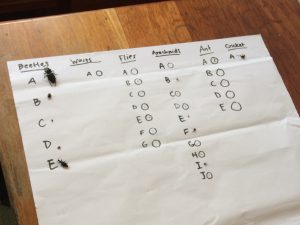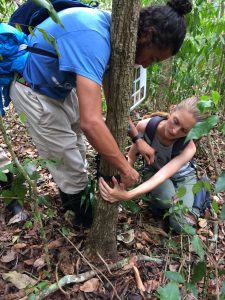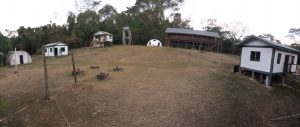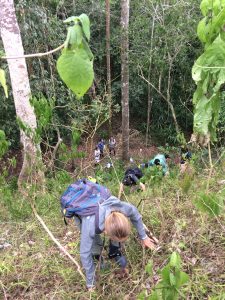This morning I pulled tick number 19 off my ear and boarded a plane to DC. It feels strange being back on the grid, sending texts and walking past Subway and McDonald’s.
This trip was an experience unlike any that I have had before. I’m so happy to have met all of the TFBs. The reef and rainforest ecosystems were both incredible, in ways that I expected and in ways that I totally didn’t expect.
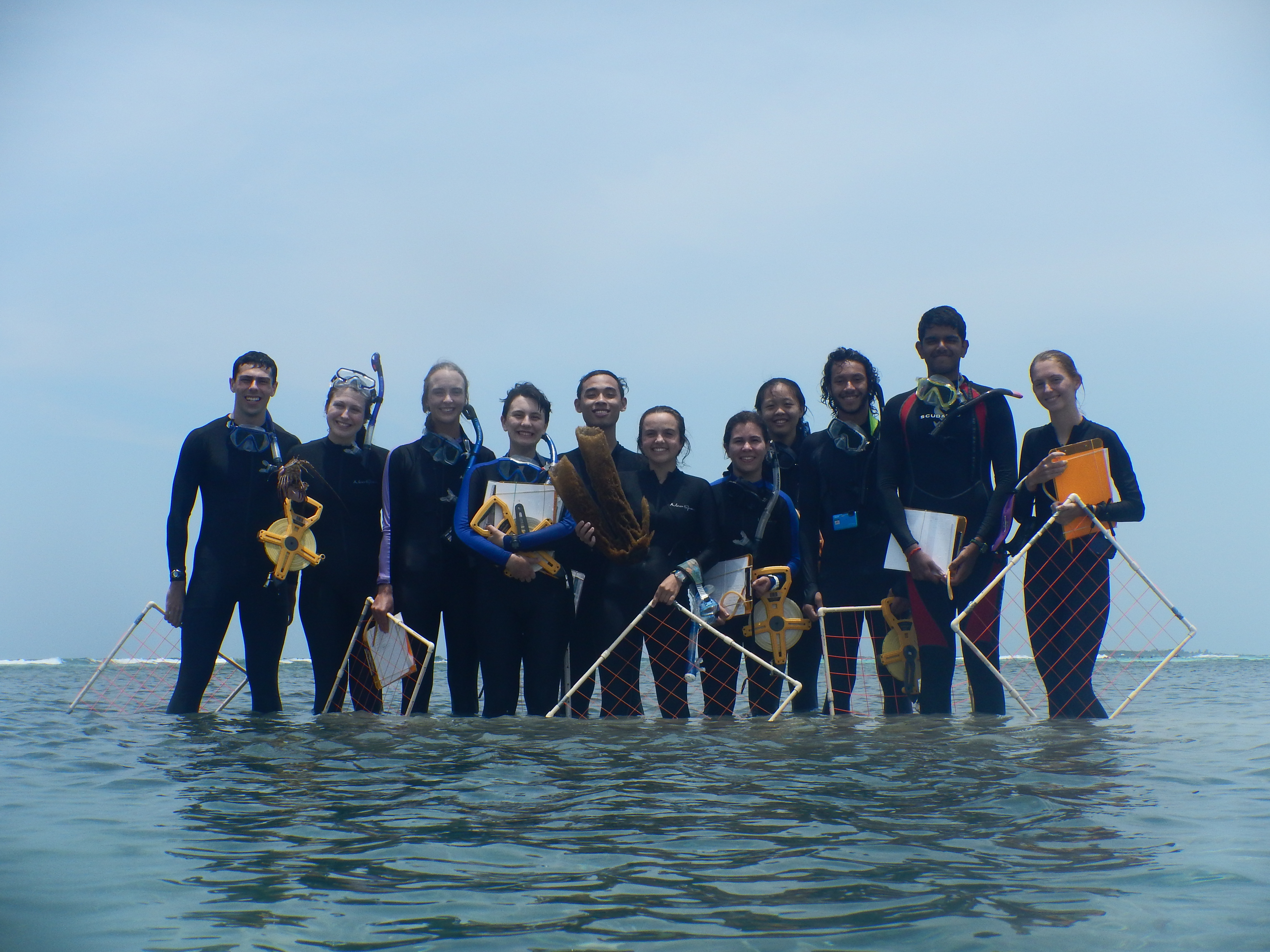
Middle Caye was, at first glance, a tropical paradise, with tall palm trees and surrounded by Gatorade-blue water. From a boat, the reef is mostly invisible. Only the reef crest, where waves break incessantly, and dark patches in the bright blue of the lagoon betrayed the reef’s position under the surface of the ocean.
Upon arrival, the Chiquibul Rainforest looked like a whole lot of trees. The ground is covered in leaf litter and the twisted roots of trees growing up and out in competition for sunlight.
In both the reef ecosystem and the rainforest ecosystem, complexity is present but not immediately apparent.
In the coral reef ecosystem, topographical complexity allows organisms to hide in crevices and under consolidated reef framework. Sponges, soft corals, and algae provide habitat, in addition to stony corals. Only after many days snorkeling around did I start to see the full range of diversity present in the ecosystem. I didn’t see any urchins until we were told to look, and then I found them tucked under rocks and under corals. I began to notice anemones wiggling in the seagrasses and I became more alert to the quick movement of reef fishes.
In the rainforest ecosystem, the diversity of plant life also provides a wide range of habitat for animal life. I did not notice the overwhelming abundance of arthropods in the rainforest until our small sampling effort yielded a whole lot of little critters. Insects and arachnids (including my enemy, the tick) were “hidden” in the grasses, on palm fronds, on tree trunks and vines and on the forest floor. Trees in the rainforest also provide habitat for other plant life (shout out epiphytes). The rainforest is far from being composed of only trees, just like the reef is far from being composed only of stony corals.
A huge similarity between the reef and the rainforest is the nutrient recycling imperative. Both coral reefs and tropical rainforests are incredibly diverse ecosystems despite being nutrient poor.
Coral reefs survive best in nutrient-poor waters. The microbial loop, during which detritus and dissolved organic matter (DOM) are incorporated into microorganisms on the reef, is necessary for rapid turnover. Tiny microorganisms are eaten, and the nutrients they consumed move up through the trophic levels on the reef. In tropical rainforests, soils are old and depleted of their nutrients. Rapid decomposition and turnover on the forest floor is a quintessential element of the rainforest. In the case of some nutrients (calcium and phosphorous) 99% appears to be recycled by forest plants.
My favorite activity from the trip was the Actun Tunichil Muknal archaeological reserve. Wading through chilly water and scrambling over slick rock formations in the dark was super cool on its own, but seeing the pottery left by the Maya and remains of human sacrifice left untouched for thousands of years was awe-inspiring. Also, the hike back through the forest in the pouring rain was rejuvenating.
My least favorite activity was collecting data on Christmas tree worms on the back reef off Middle Caye. Collecting data was difficult on the shallow reefs; constantly being pushed around by the waves and crashing into rocks was an inconvenience. Honestly, it was still a good time and Adolfo found the huge dead sponge there, so it was worth crashing around and spluttering in the waves for a while.
This course was incredibly educational; I felt like I was constantly absorbing new information. It met my expectations and exceeded them. Being a tropical field biologist requires hard-work and flexibility for when things inevitably don’t go as planned. But the experience also showed me that tropical field biology requires and encourages creativity. Being at Glover’s and Las Cuevas, in relatively untouched ecosystems, made me appreciate the awesomeness of nature.



